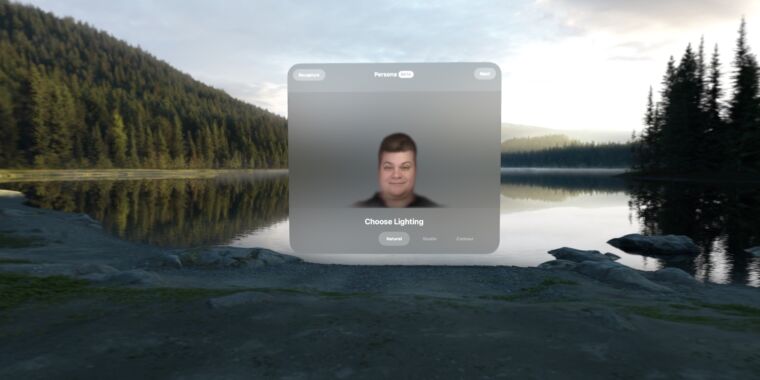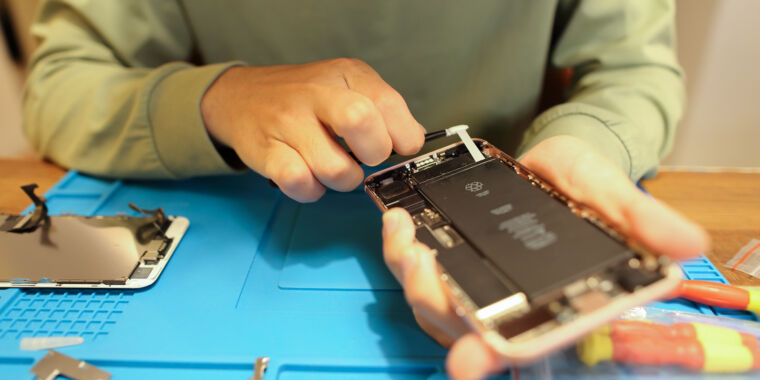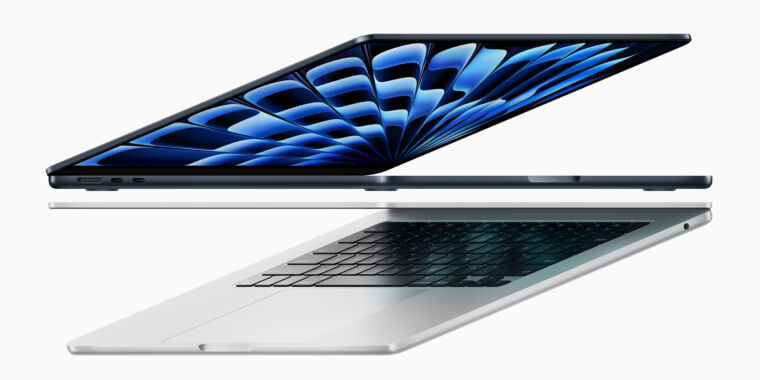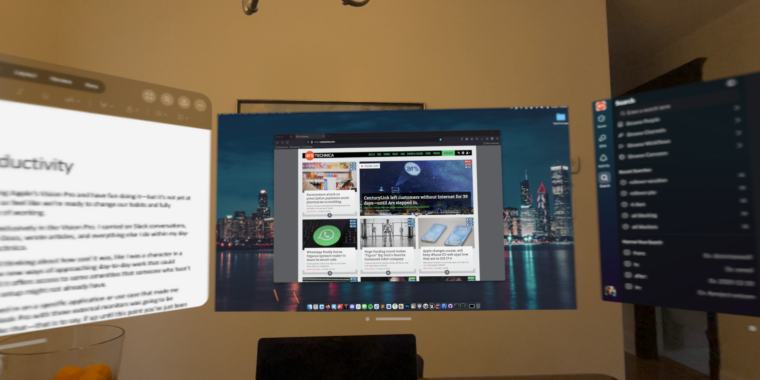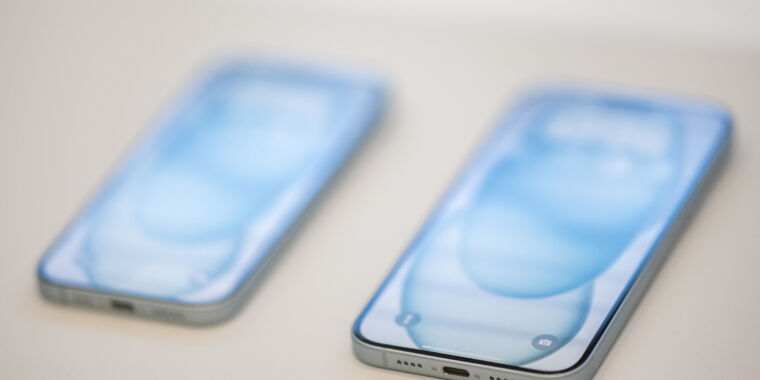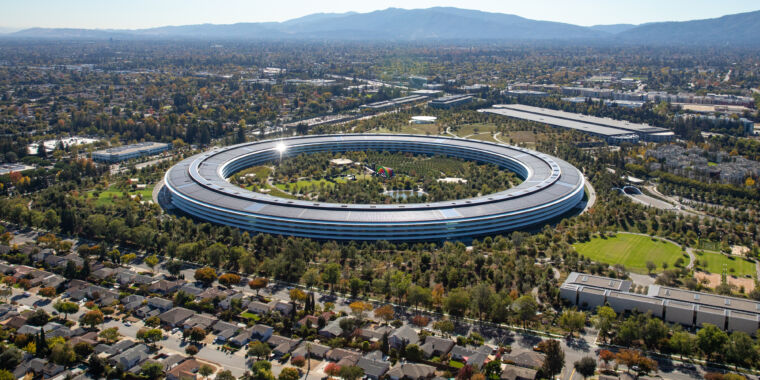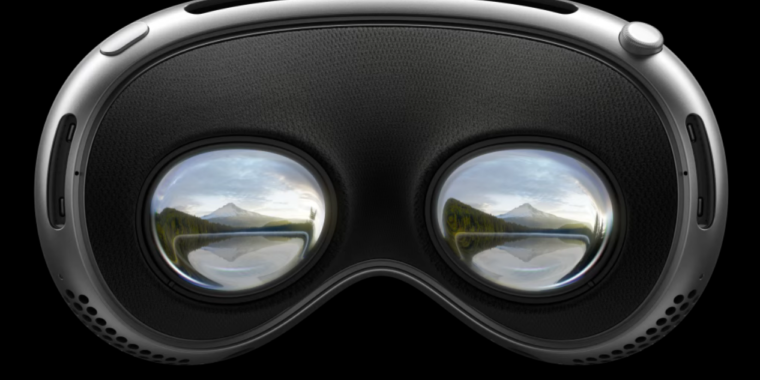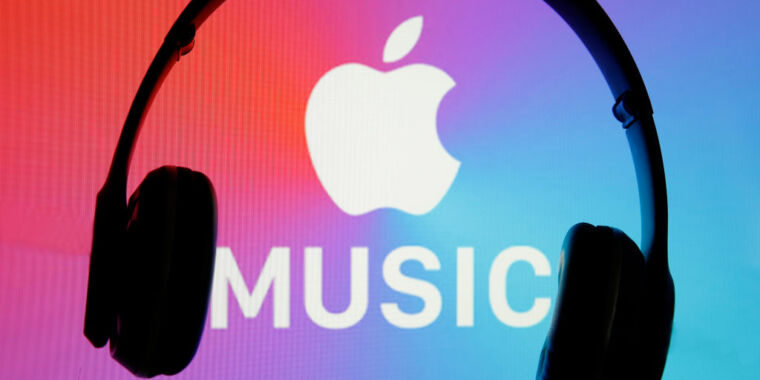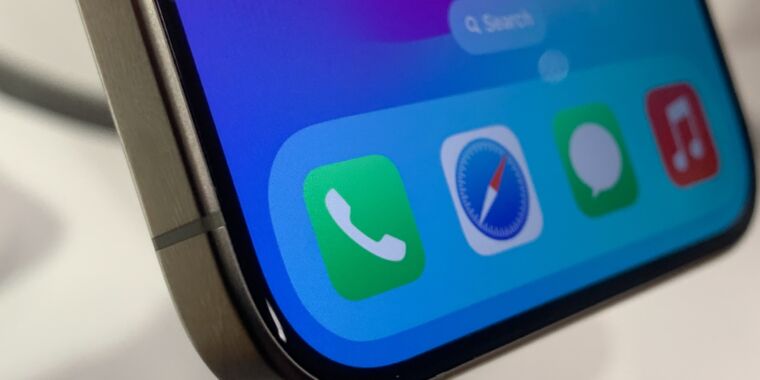visionOS 1.1 tries to make Personas less unsettling, plus other Apple OS updates
persona non grata —
Apple starts picking low-hanging fruit in visionOS; other OSes see minor improvements.

Enlarge / A blurry, ghostly Persona in visionOS 1.0. They should at least look less bad in visionOS 1.1.
Samuel Axon
Apple has released a long list of medium-sized software updates for most of its devices today. The macOS Sonoma 14.4, watchOS 10.4, tvOS 17.4, and visionOS 1.1 updates are all available now, and most of them add at least one or two major features as they fix multiple bugs and patch security vulnerabilities.
The visionOS 1.1 release is the first major update for Apple’s newest operating system, and as our coverage of the headset has demonstrated, there’s still plenty of low-hanging fruit to fix. Most notably for people who are trying to use the headset for work meetings, Apple says that there have been multiple changes to the look of Personas, the 3D avatars that show up in your place when you’re video chatting with the Vision Pro on your face. The update improves “hair and makeup appearance,” “neck and mouth representation,” and “rendering of the eyes,” and while it’s clear that it’s an improvement over the 1.0 release of Personas, the core uncanniness still seems to be intact. The Persona feature is still labeled as a beta.
Apple has also made tweaks to the appearance and functionality of the headset’s virtual keyboard, improved the Virtual Display feature’s Mac connectivity, and added a handful of mobile device management features for IT administrators.
Apple’s headlining feature for macOS 14.4 is the addition of new Unicode 15.1 emoji, plus podcast transcriptions in the Apple Music app. It’s unclear whether this release enables multiple external displays for users of the $1,599 M3 MacBook Pro, a feature that Apple announced alongside the new M3 MacBook Airs.
Apple Watch owners can look forward to the resolution of one annoying bug I’ve run into a few times on my own watch: a bug that would make the screen act as though it was receiving touch input even when you weren’t touching it. Sometimes referred to as a “ghost touch” or “phantom touch” bug, the only way to get it to go away was to reboot the watch. I haven’t noticed the bug since I installed one of the later watchOS 10.4 betas a couple of weeks ago.
Version 17.4 of the HomePod operating system now allows users to set their preferred music service, so telling Siri to play music will automatically use whatever service you want instead of defaulting to Apple Music unless you specify. The tvOS 17.4 update doesn’t appear to include any particular features or fixes of note.
All of the new releases follow iOS 17.4 and iPadOS 17.4, which came out a few days ago with mostly minor changes unless you happened to live in the European Union. For European users, that update ushers in Apple’s first attempt at compliance with new regulations that require the company to allow the use of third-party app stores, alternate browsing engines, and sideloaded apps. These changes come with plenty of conditions and caveats, as Apple seeks to remain the ultimate arbiter of what software can and can’t run on iPhones and iPads.
visionOS 1.1 tries to make Personas less unsettling, plus other Apple OS updates Read More »
